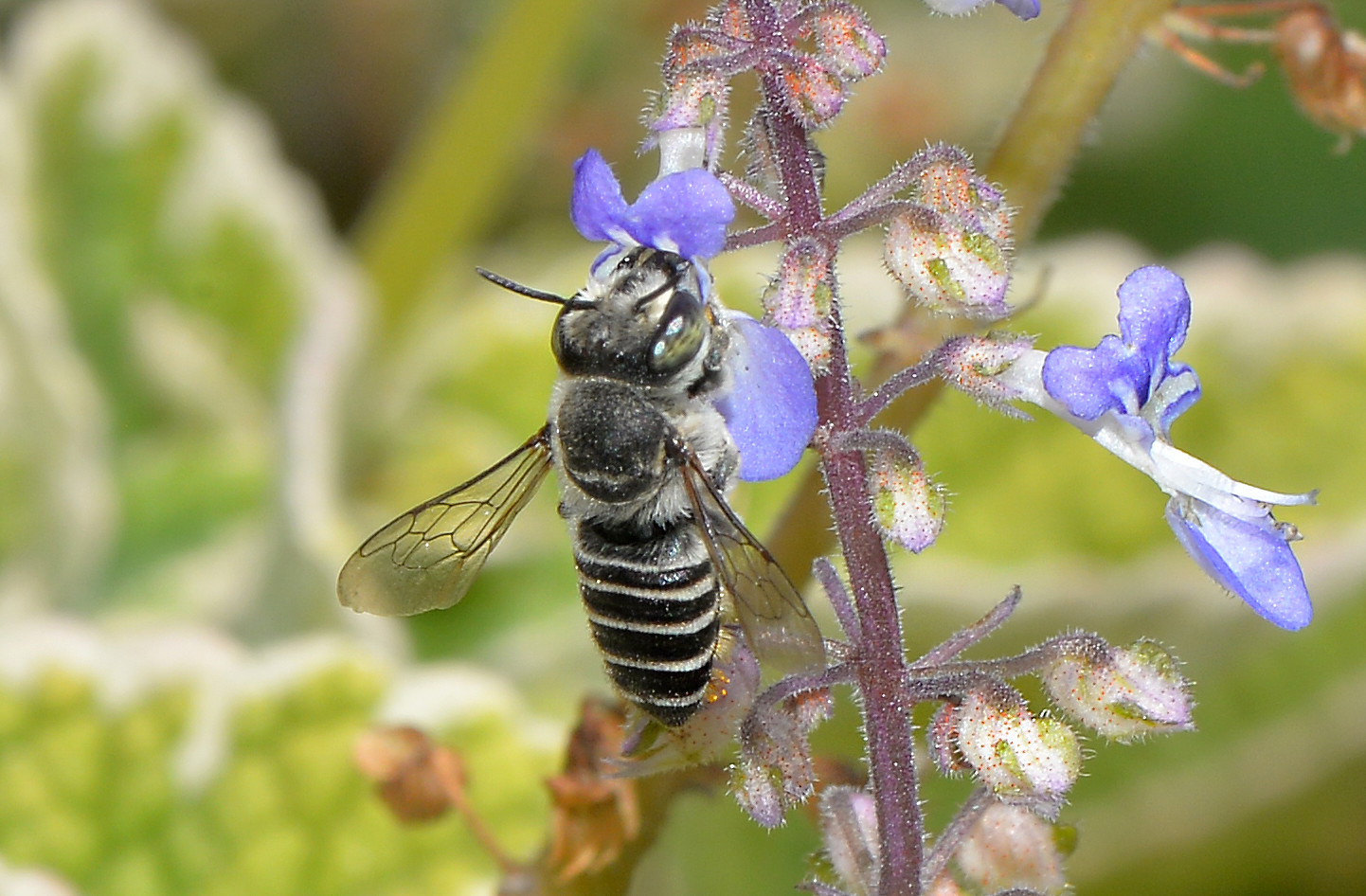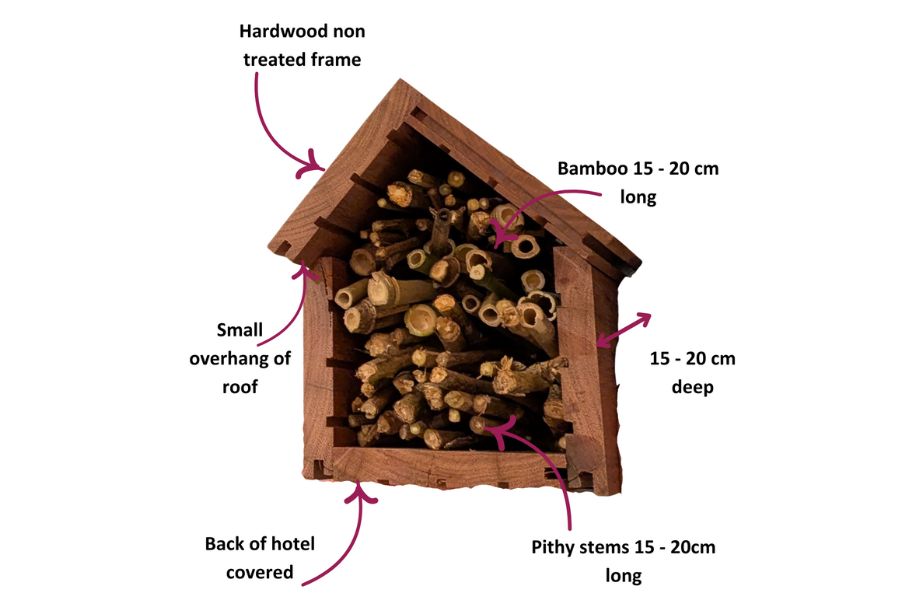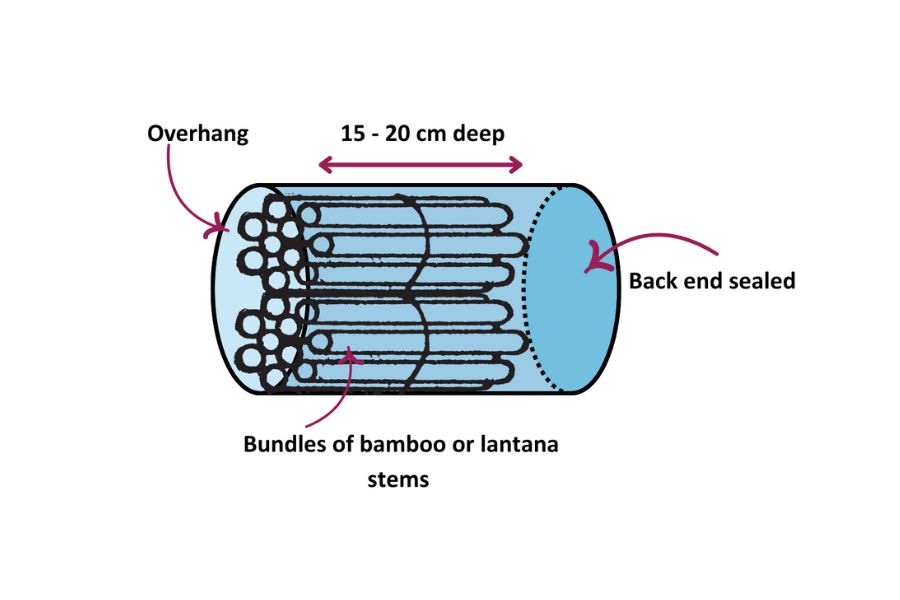Blue banded bee

In the Sydney region there are 200 native bee species. Most are tiny – smaller than the common European honeybee – so you might not have noticed them.
While some bees, like the well-known Sugarbag stingless bees (Tetragonula carbonaria), nest in hives, the majority are solitary. These bees make their nests in shallow ground tunnels or stems of dead plants.
Here are a few common ones you might spot:
Find out more about our native bees and what makes them so special.
Blue banded bee

Reed Bee - Tim Rudman on Flckr

Leaf cutter bee - Jean & Fred Hort on Flickr

Bee hotels are suitable for bees who like to burrow in tubes, like resin, leaf cutter, reed and masked bees.



If you are handy, build a timber frame with untreated hardwood 15-20cm deep, with a slight overhang of the roof to protect from the weather. Alternatively, you can also use a plastic bottle.
Cut bamboo and lantana stems to 15–20 cm lengths. The bamboo stems must be closed at one end and open at the other, for the bee to crawl down. The lantana stems are soft enough for the bee to make their own tunnel. Smooth any rough edges with sandpaper. Place the stems inside the hotel frame. You can tie them together with string if needed – avoiding glue, as it may harm the bees.
Want to give your bee hotel a personal touch? Use weatherproof, non-toxic paint to decorate the outside and potentially attract more bees!
It may take time for bees to find your hotel and move in. You may need to wait until spring or summer, when bees are most active.
You should aim to clean your bee hotel every two years, or once all of the tubes have been used or start deteriorating. Wait until late winter when most bees have hatched and moved on before you do this.
First, carefully remove the stems and place them in a dry outdoor area. Place a box or bucket upside down over the tubes, with a small hole to let in the light. When the remaining bees emerge, they will fly towards the light. Then you are safe to refill the hotel with fresh, stems and bamboo.
Find out how to build a bee hotel for blue banded bees, which nest in soft sandstone and old mortar, in this video from Planting Seeds.
Here are more simple things you can do at home to create a bee-friendly environment: